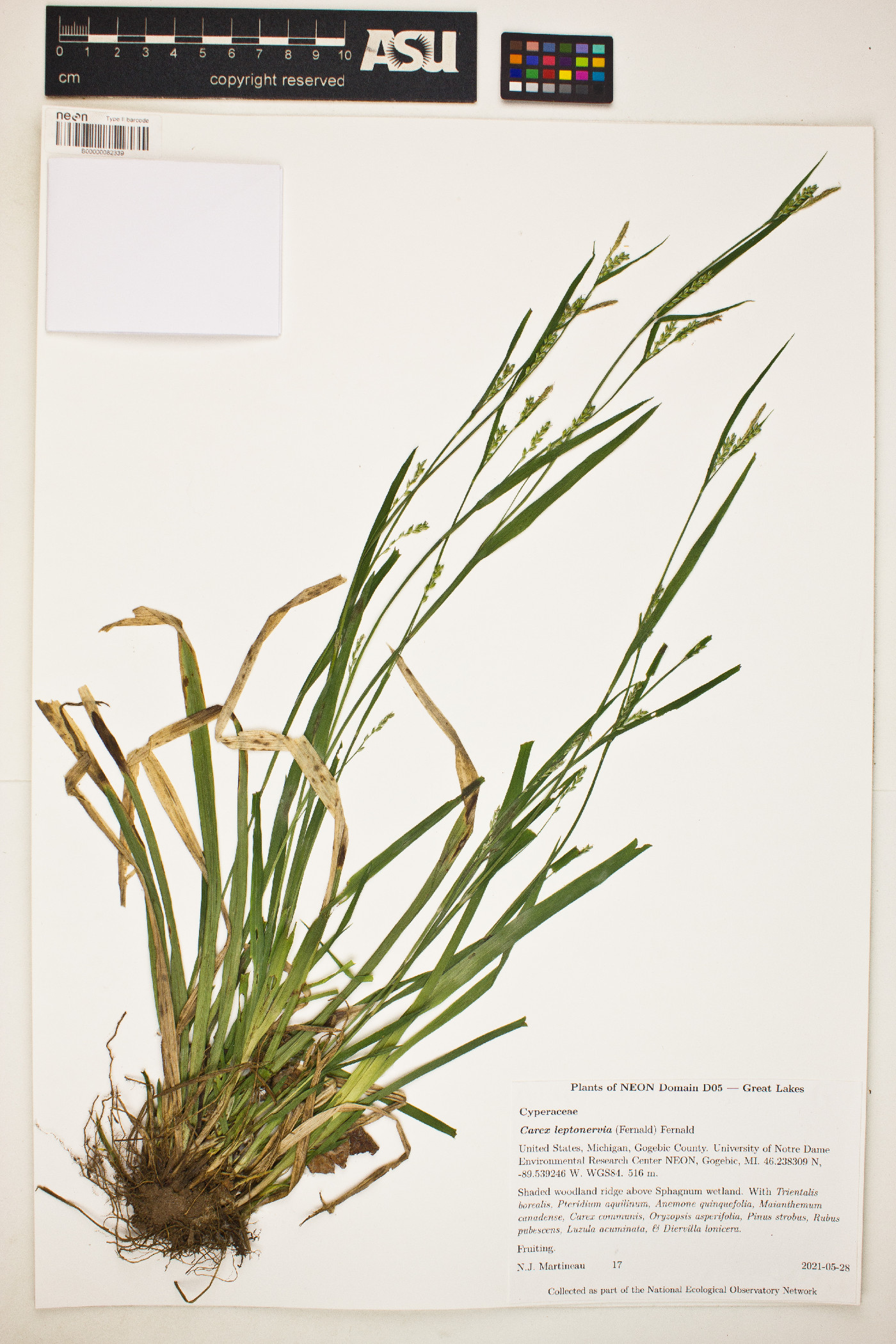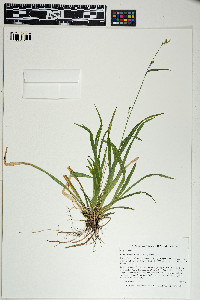|
|
|
|
Family: Cyperaceae
nerveless woodland sedge
[Carex laxiflora var. varians L.H.Bailey] |
Culms densely tufted, ascending, lax or, occasionally, decumbent, 12-44 cm × 0.7-1.2 mm. Leaves: basal sheaths brown; sheaths 3-24 mm, serrulate; blades ascending, midrib well developed abaxially, lateral veins developed, flat, 10-32 cm × 3-10 mm, blades of overwintering leaves smooth. Inflorescences: peduncles of proximal spike 0-8 cm, distal lateral spike not exserted; of terminal spike to 0.2 cm. Bracts 10-30 × 2-7 mm, 2d pistillate bract frequently overtops terminal and distal lateral spike, blade of distal lateral spike linear, narrower than spikes, widest bract blade of distalmost lateral spike 0.5-3.4 mm wide. Spikes 4(-5) per culm; lateral spikes 9-22 × 2.8-4 mm; terminal spike linear, 7-16 × 1.2-2 mm, arising from same bract as distal lateral spike, usually surpassed by distal bract. Pistillate scales 2-2.5 × 1-1.8 mm, apex acute or apiculate. Staminate scales ovate, 2.2-2.6 × 0.8-1 mm, margins hyaline or slightly brown tinged, apex acute. Anthers 1.6-2 mm. Perigynia 5-14 per spike, overlapping or slightly scattered on proximal spike, ascending or spreading, 8-18-veined, 2-3 veins conspicuous, others obscure, elliptic-obovate, 2.2-3.2 × 1-1.5 mm, membranous; beak abruptly to slightly curved, 0.3-1.1 mm. Achenes obovoid, 1.8-2.8 × 0.8-1.2 mm. 2n = 36. Fruiting spring-summer. Moist to wet deciduous, evergreen, or mixed deciduous-evergreen forests, higher elevations southward; 0-1800 m; N.B., Nfld. and Labr., N.S., Ont., P.E.I., Que.; Conn., Del., Ind., Ky., Maine, Md., Mass., Mich., Minn., N.H., N.J., N.Y., N.C., Ohio, Pa., R.I., S.C., Tenn., Vt., Va., W.Va., Wis. Tufted, 2-6 dm; basal sheaths brown; largest lvs to 10 mm wide; upper bract-sheaths minutely serrulate on the angles; terminal spike staminate, 0.7-1.6 cm, sessile or on a short peduncle to 2 mm, surpassed by or only slightly surpassing the uppermost pistillate spike; pistillate spikes 2-4(5), 1-2 cm, the upper 1 or 2 approximate to the staminate one, sessile or short-peduncled, the others more remote, evidently pedunculate, none basal; second pistillate bract often overtopping all the spikes; pistillate scales usually short-awned or apiculate; perigynia 5-14, 2.2-4.1 mm, 2-ribbed, otherwise nerveless or only obscurely few-nerved, obovoid and obscurely trigonous, abruptly contracted to the short, entire beak; achene trigonous; 2n=36. Moist woods; Nf. to ne. Minn., s. to N.J., Pa., Ind., and Wis., and in the mts. to N.C. and Tenn. Gleason, Henry A. & Cronquist, Arthur J. 1991. Manual of vascular plants of northeastern United States and adjacent Canada. lxxv + 910 pp. ©The New York Botanical Garden. All rights reserved. Used by permission. |



